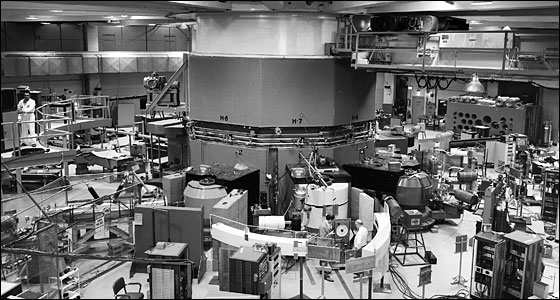Stop 5
High Flux Beam Reactor

One of the most recognizable facilities on site, the High Flux Beam Reactor was designed to produce more abundant amounts of neutrons than the BGRR could, to investigate the structure of matter. Starting operations in 1965, the HFBR was one of the world’s premier research reactors for more than 30 years.
The Brookhaven-designed HFBR was unlike most reactors at the time, because it produced its maximum neutron flux outside the reactor core. Neutron beams were delivered to experimenters through ports that came out of the core, a method that yields more slow-moving neutrons, which are desirable for research. Most research reactors today still incorporate the design innovations that first appeared in the HFBR.
The HFBR was a hub for discovery. Among many breakthroughs, scientists there demonstrated the relationship between superconductivity and magnetism. They uncovered new data for many unstable radioactive isotopes, including isotopes that astrophysicists used to study supernovae and the electronics industry used to identify impurities in semiconducting materials. At the HFBR, researchers determined the structure of the amino acids that make up every protein in every living cell of every living thing. They also developed new uses for radioactive isotopes in treating cancer, cardiovascular disease, arthritis, and other medical disorders.
The reactor was closed in 1999, after tritium, a by-product of operations, was discovered in groundwater south of the building. Clean-up efforts began immediately. Funding from the American Reinvestment and Recovery Act accelerated the final steps in decommissioning the HFBR, and its doors were locked in 2010 after it was put into a safe and stable state.


